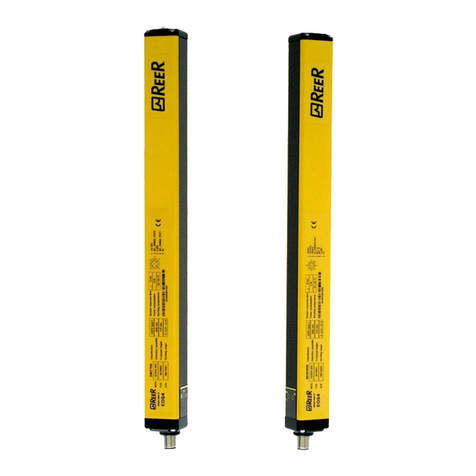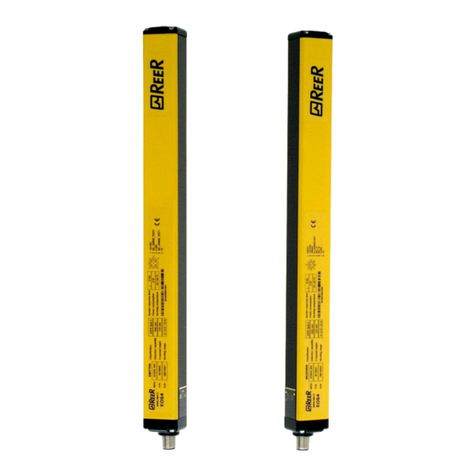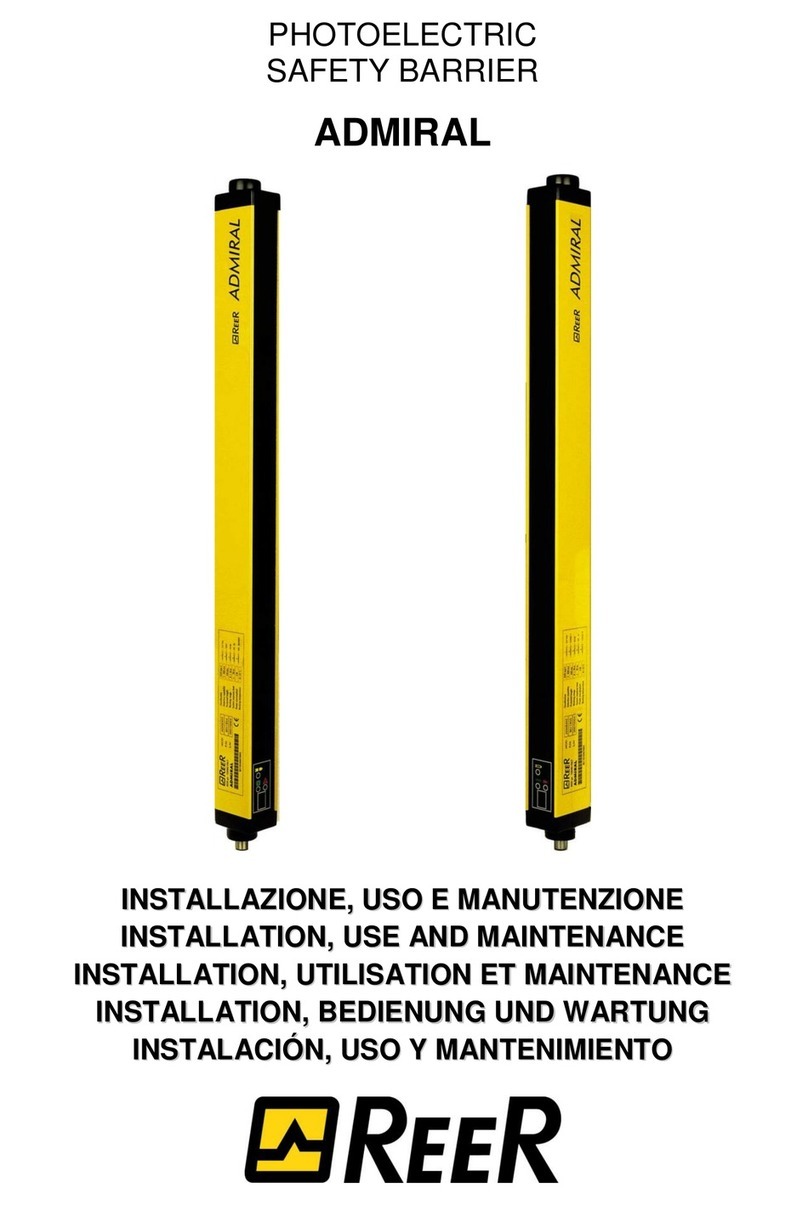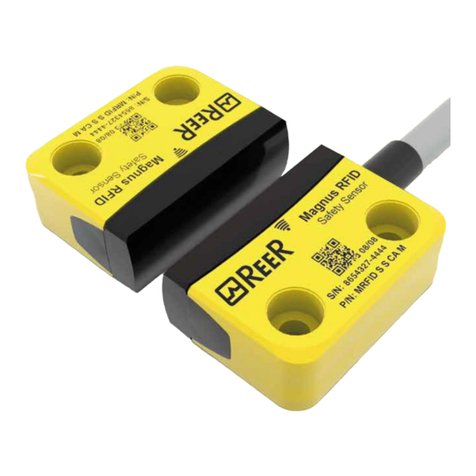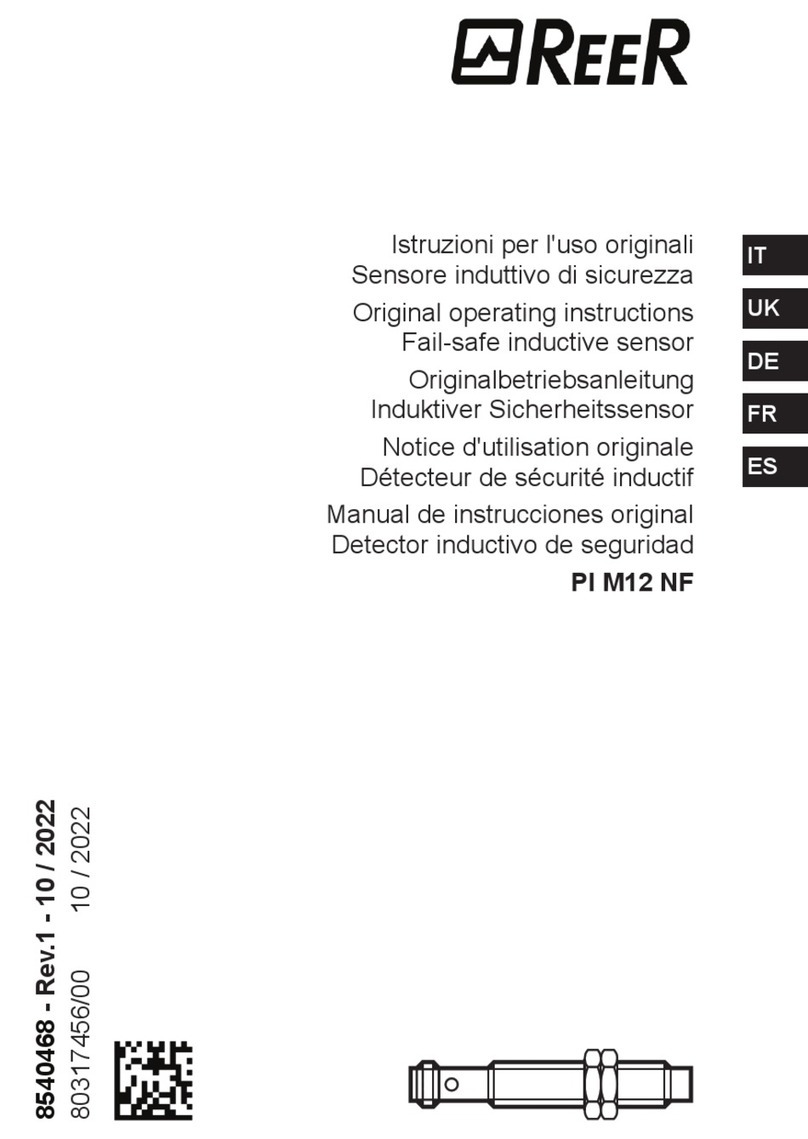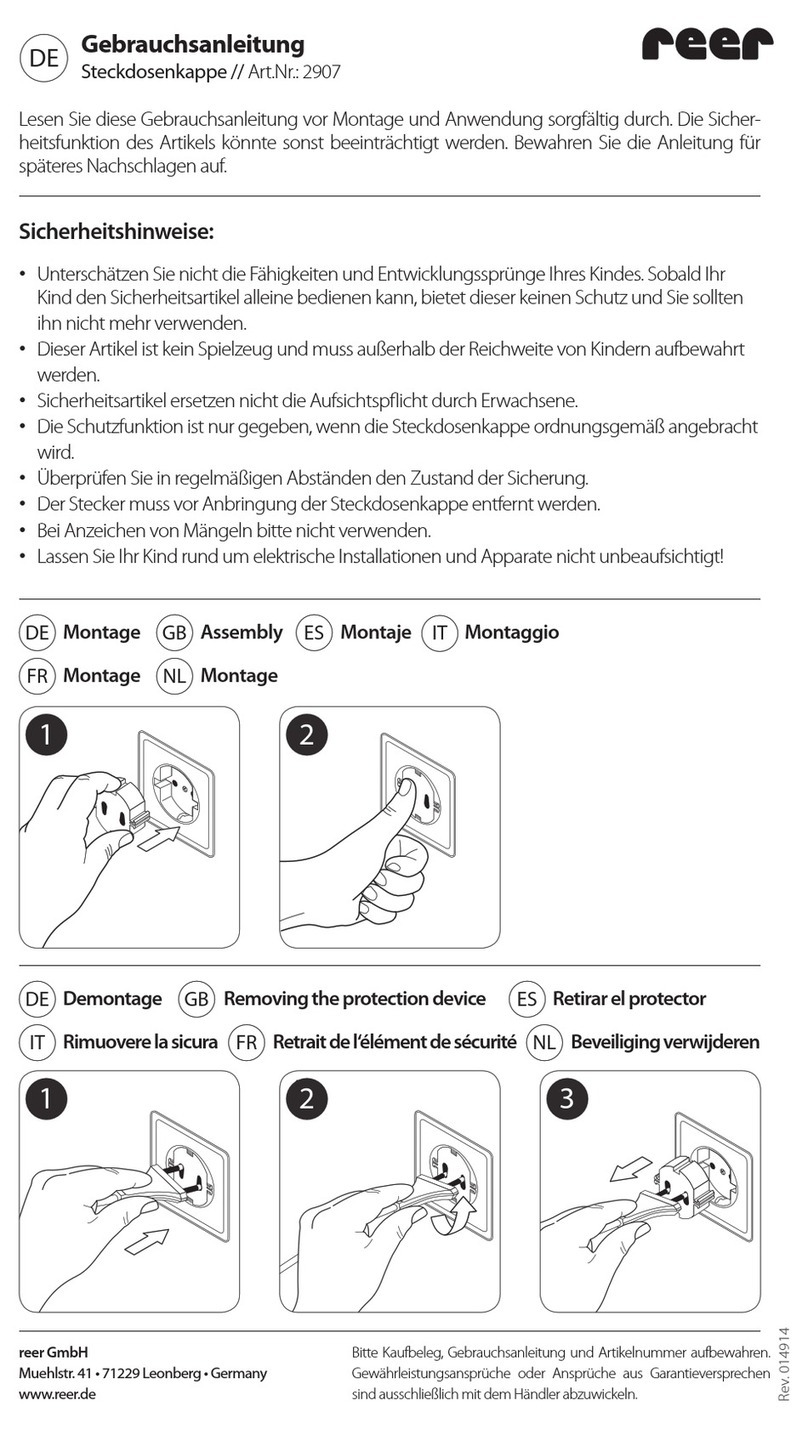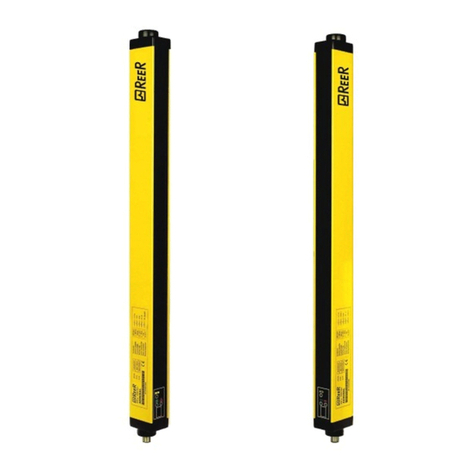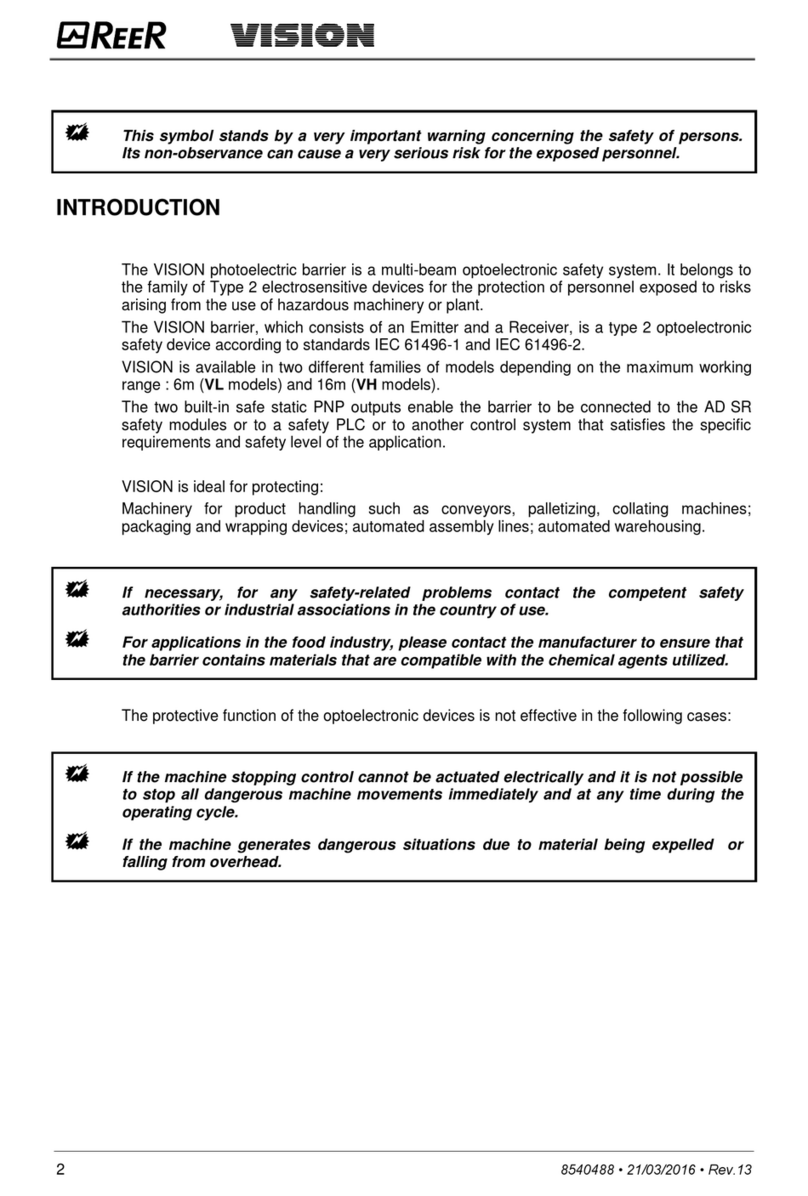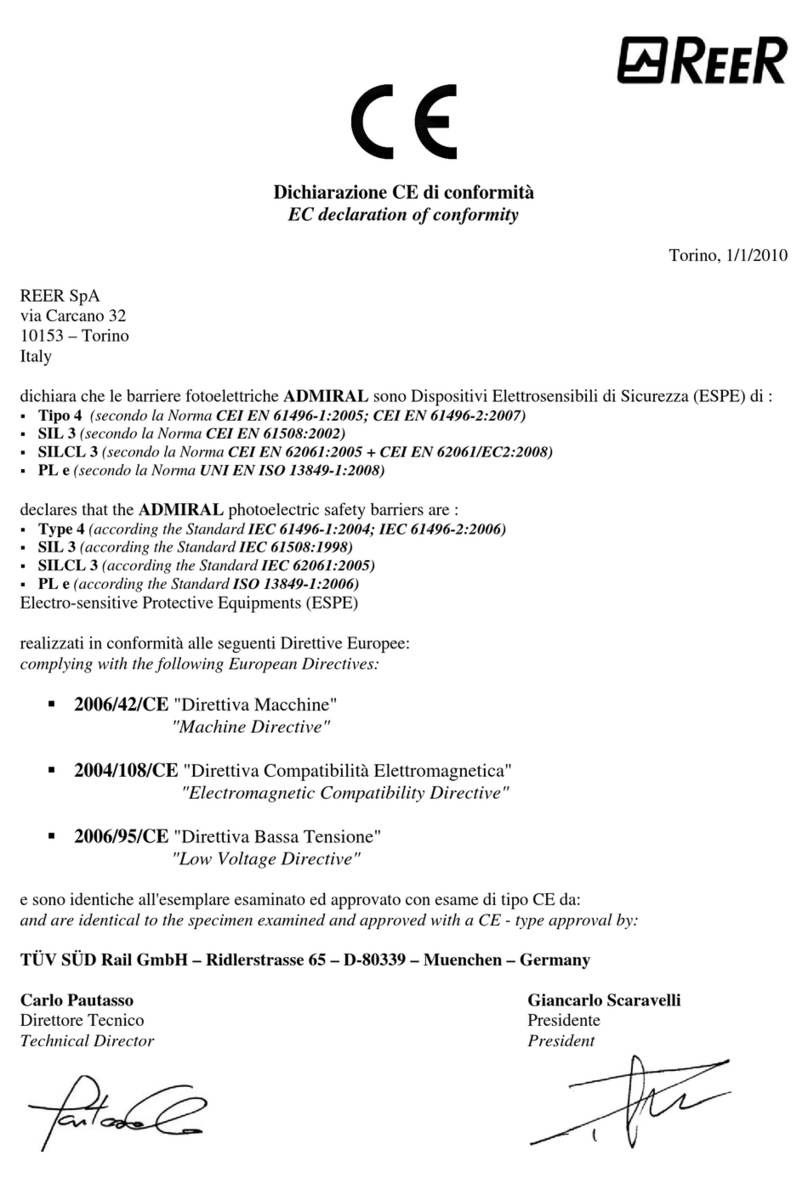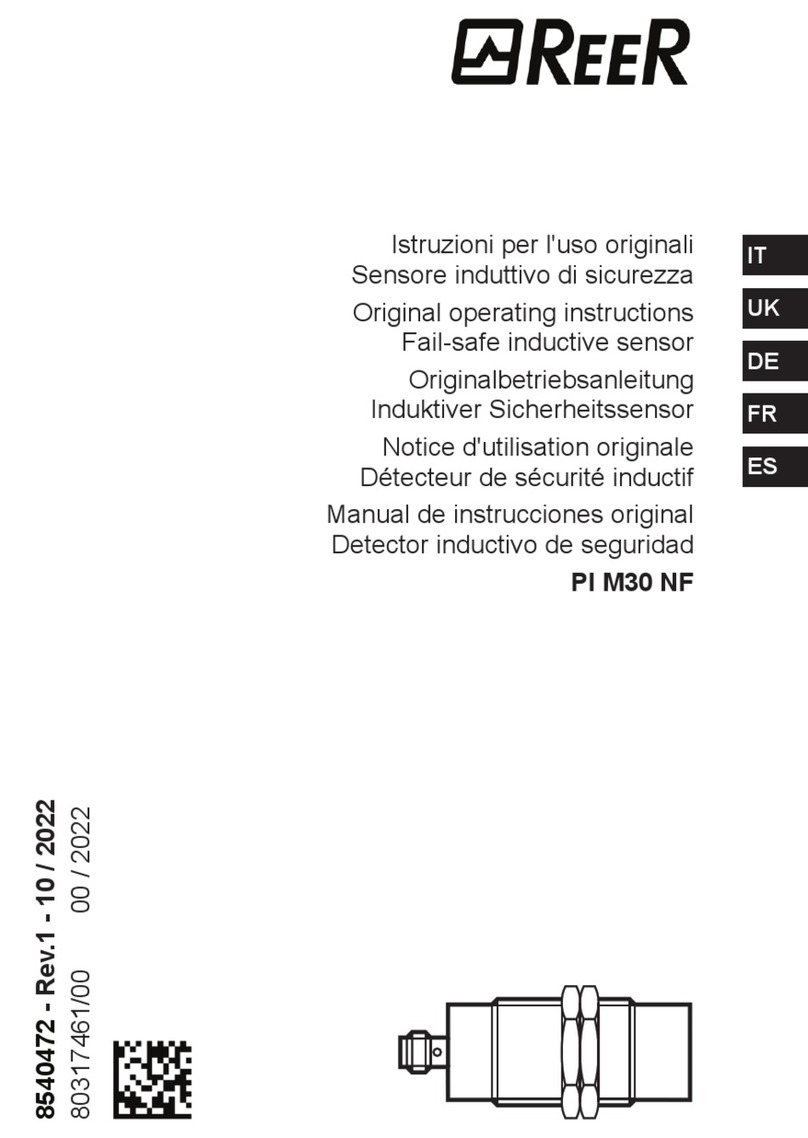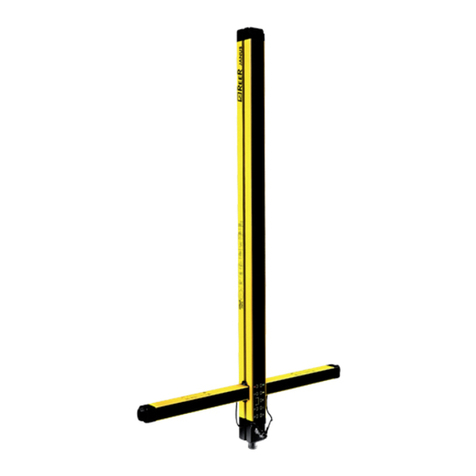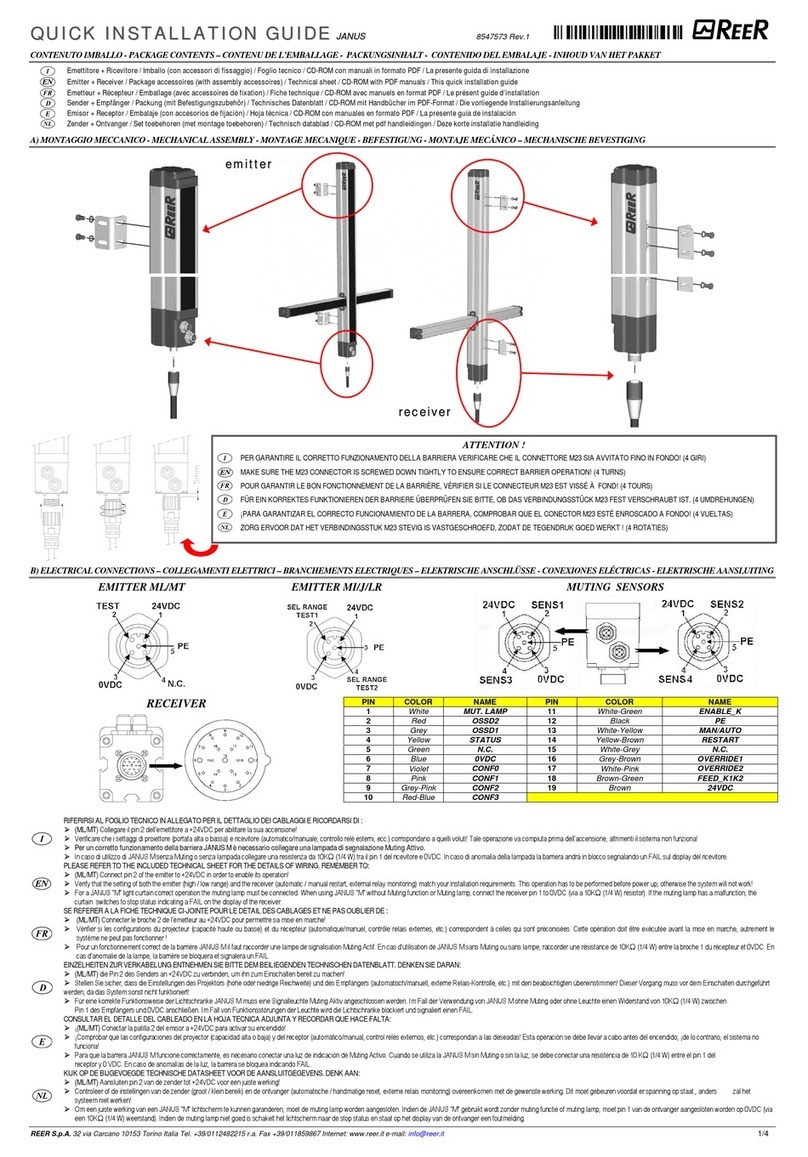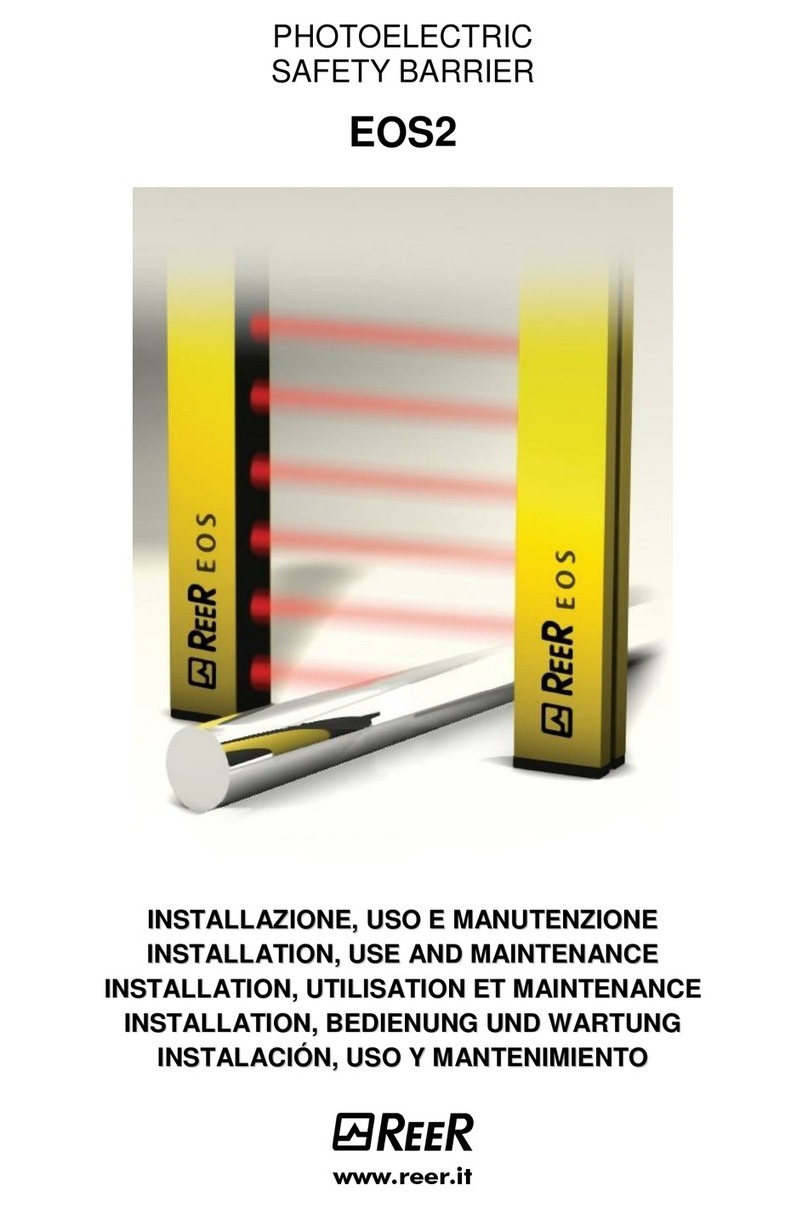
VISION MXL
8540687 • 29/03/2010 • Rev.10 5
MUTING FUNCTION
The Muting function is a temporary suspension of the safety light curtain’s protective
function. Carefully check your risk analysis in order to assess whether the Muting function
is compatible with your application and what additional measures have to be taken.
The Muting function is capable of generating a temporary and automatic suspension of the light
curtain functioning in order to guarantee the normal flow of material through the protected passage. The
muting function takes place with 2 events:
•Interruption of beams from the two muting sensors, in a maximum time of 4 seconds.
•MUTING ENABLE signal (pin C) at +24DC.
The activation of the Muting function depends not only on the consent obtained by activating the MUTING
ENABLE signal, but also on the system’s acknowledgement of the object interrupting the guarded
passage. In other words, whenever the system acknowledges the material and distinguishes it from an
eventual operator (in a potentially dangerous situation), it is enabled to temporarily exclude the curtain, so
that the material can cross the passage. The Muting sensors are the detection system which decides
whether to activate or not the Muting function. Only a correct sequence of beam interruption of the
Muting sensors can consent the disabling of dangerous passage control.
Remember that muting is a temporary automatic suspension of the safety function. This
means that a time limit is always mandatory. If a time out limit of 90min is a too short time for
a particular machine cycle, the configuration without time monitoring (t =
∞
) can be selected.
In this case alternative solutions or additional measures shall be implemented to detected the
condition of a muting function permanently active caused by accumulation of faults or by the
muting sensors activated all the time. For example for the application of guarding the
openings of a conveyor system (palletizers) by monitoring appropriate signals generated by
the transport system to determinate if and when a pallet is in the detection zone.
MUTING TYPES
MXL uses 2 sensors, to be connected to the M16 connector located on the receiver. These sensors can
be of different types (proximity, optical, capacity), with PNP or electro-mechanic outputs and with DARK-
ON change-over switching, i.e. active output in presence of material.
CONNECTION FOR TWO-WAY MUTING
This connection is useful to protect the passages with pallet output and input.
The meeting point of the two sensors must be located inside the dangerous area, to avoid
undesired and dangerous activations of the Muting function.
The activation of the Muting function takes place after sensors S1 and S2 are interrupted at the same time
(within max 4 sec). The Muting function will remain activated for as long as both sensors are occupied, and is
disabled as soon as the first of the two sensors is free. Maximum Muting duration (timeout) can be selected as
30 seconds, 90 minutes or Infinite.
Figure 2 - Two-way openings with pallet entrance/exit.
DANGEROUS
AREA
